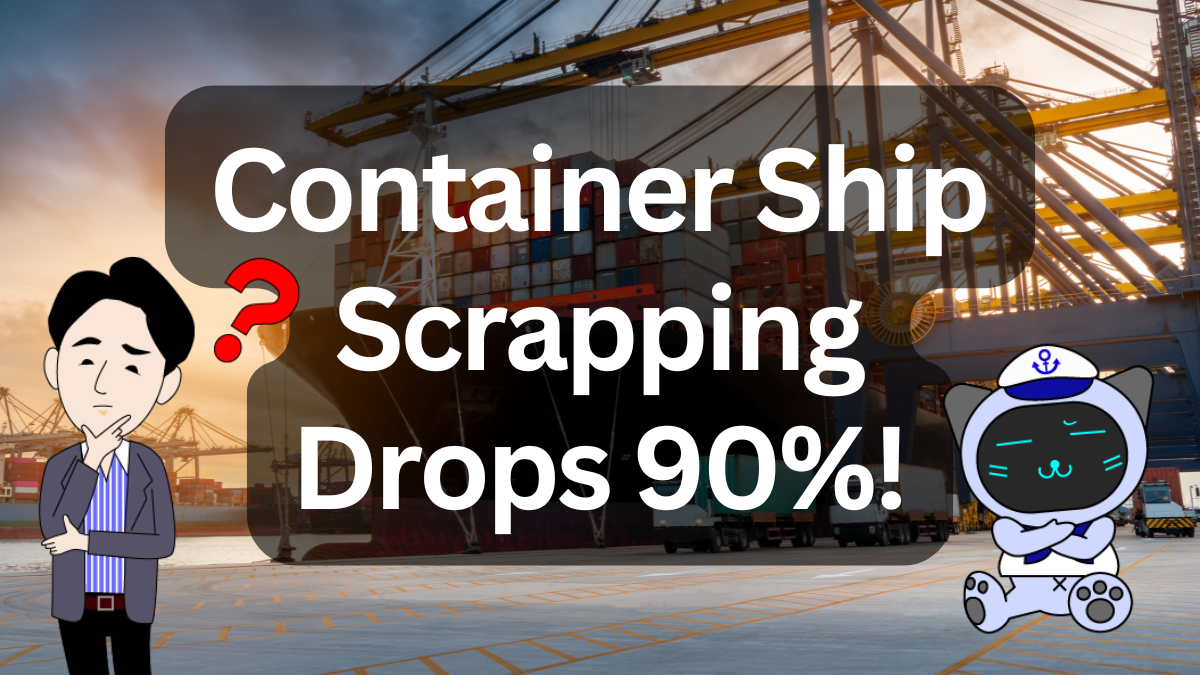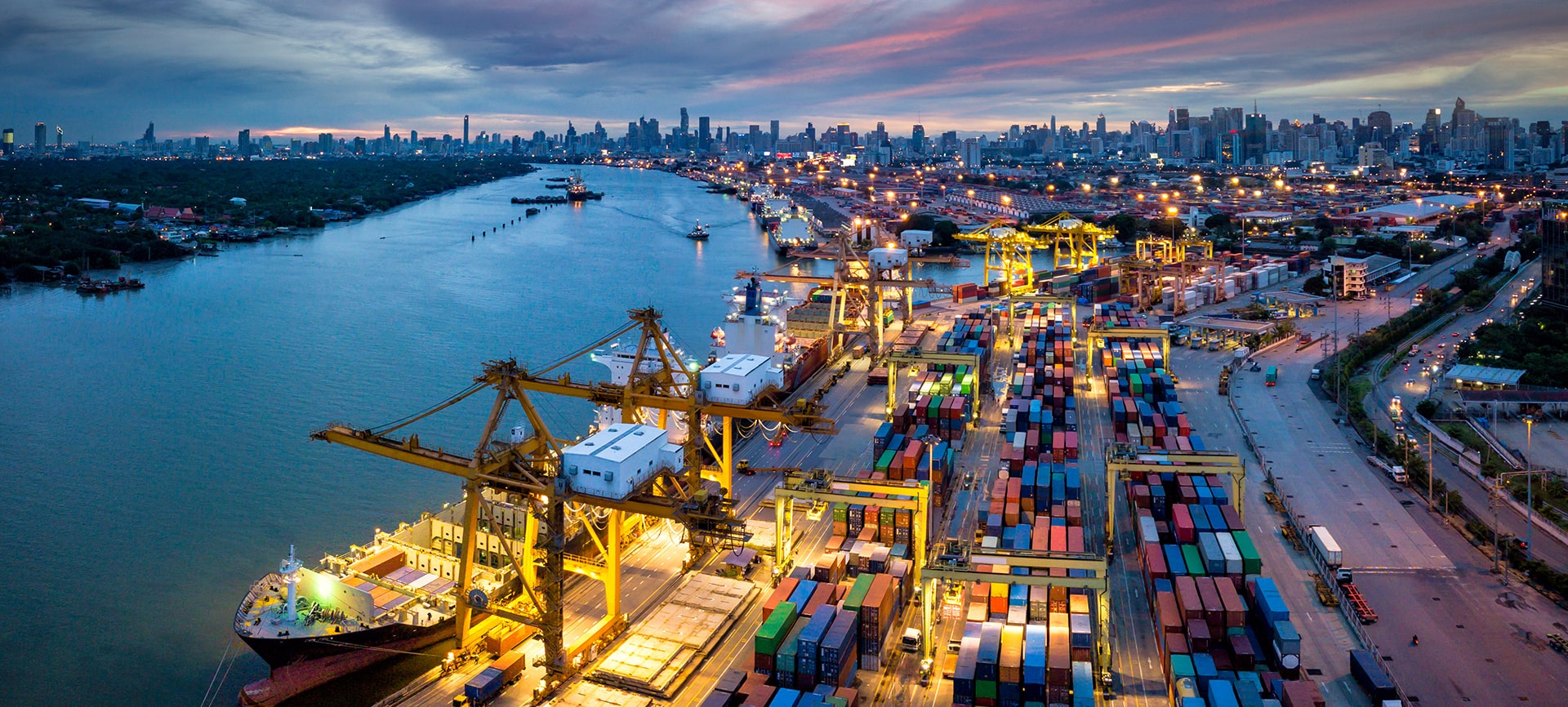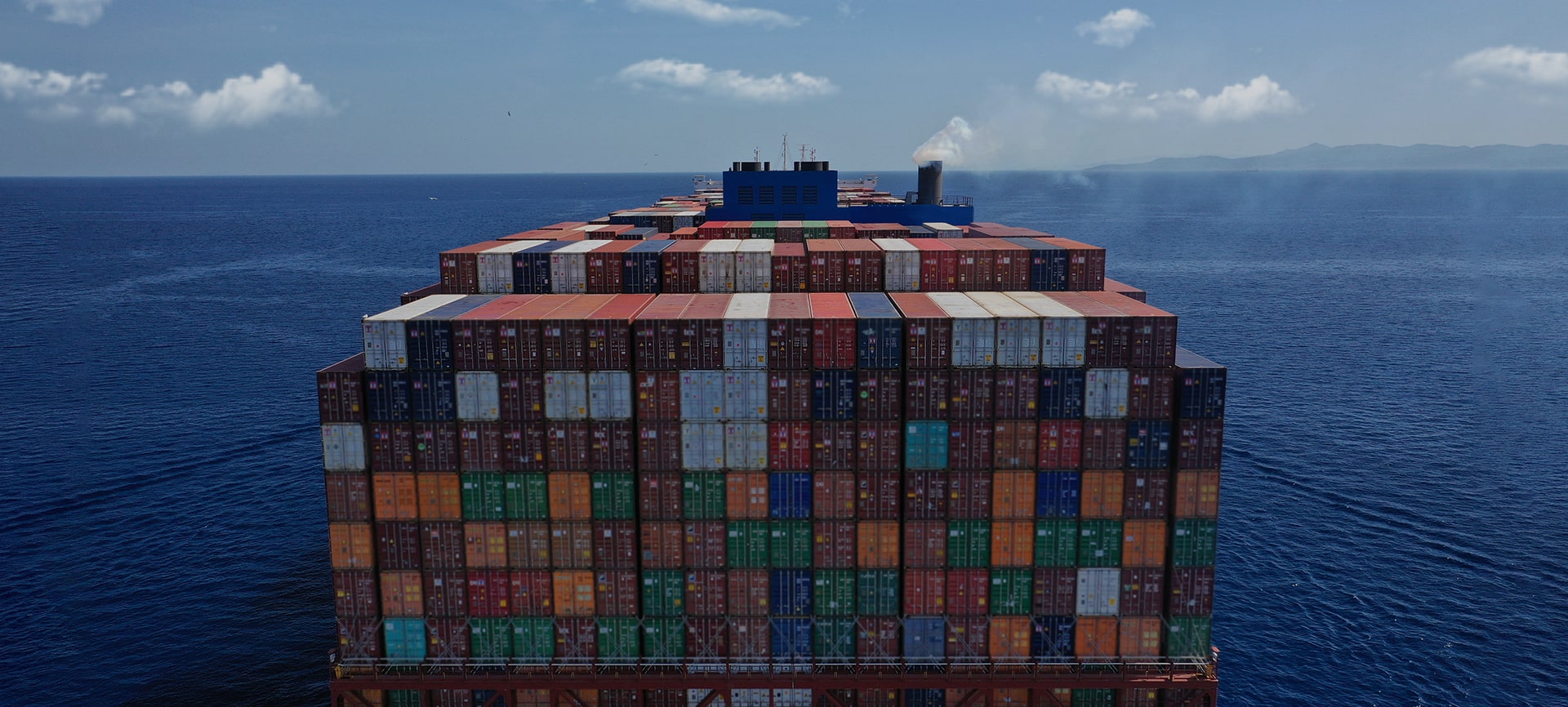Posted on: October 28, 2025 / Last updated: October 28, 2025
Container Ship Scrapping Hits 20-Year Low in 2025: Hidden Risk of Oversupply in Global Shipping

According to UK-based Clarkson Research, only 12 container ships totaling about 5,000 TEU were scrapped between January and September 2025 — a sharp 90% year-on-year drop.
This marks the lowest scrapping volume in two decades, raising concerns over future fleet oversupply and freight rate pressure.
CONTENTS
Record-Low Scrapping Volume in 20 Years
Clarkson’s data shows that most scrapped vessels were small feeder ships (300–500 TEU), with almost no large mainline ships dismantled.
Normally, shipowners retire aging vessels during market downturns, but the opposite trend has emerged in recent years.
Why Are Aging Ships Still Operating?
The main reason is the strong charter market.
High charter rates make it more profitable for shipowners to extend or resell old vessels rather than scrap them.
- Active secondhand vessel market
- Persistent demand for small feeder ships
- Limited newbuilds in small-size segments
As long as buyers exist, owners prefer keeping older ships in operation rather than sending them for recycling.
Red Sea Tensions and Slow Steaming Tighten Capacity
Geopolitical risks in the Red Sea and Suez Canal have forced ships to detour around the Cape of Good Hope.
This extends voyage times and effectively reduces available capacity.
At the same time, slow steaming for fuel efficiency and environmental compliance (EEXI/CII) further limits fleet productivity, keeping older ships in use longer.
Newbuild Boom but Slow Scrapping
Despite the newbuilding boom — about 7.3 million TEU of new capacity between 2023–2025 — scrapping remains sluggish.
- Weaker scrap steel prices in India and Bangladesh
- Unstable local currencies and tighter environmental rules
- Implementation of the “Hong Kong Convention” for ship recycling (June 2025)
These factors make dismantling unattractive, prompting shipowners to delay retirement decisions.
Growing Risk of Oversupply and Rate Decline
Analysts warn that without faster scrapping, global oversupply is inevitable.
To restore market balance, the industry may need to remove 4.5 million TEU by 2030.
Excess capacity will eventually exert downward pressure on freight rates, even if geopolitical disruptions keep some routes firm in the short term.
Conclusion: Short-Term Gains, Long-Term Risk
While extending the life of older ships makes sense in a strong charter market, it also plants the seeds of future rate declines.
The current “delay in scrapping” may turn into tomorrow’s “oversupply crisis.”
The industry must now balance short-term profits with long-term market stability to avoid repeating past cycles of boom and bust.












